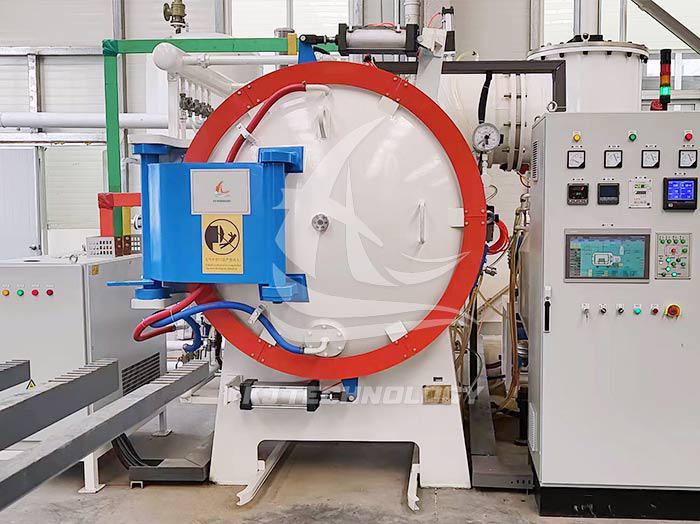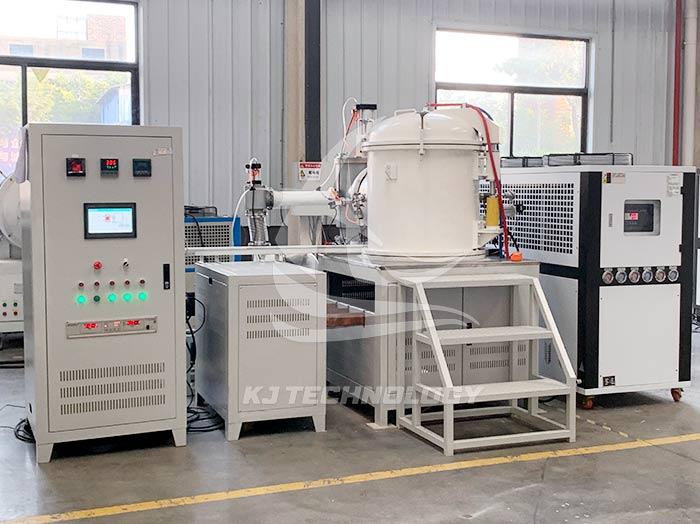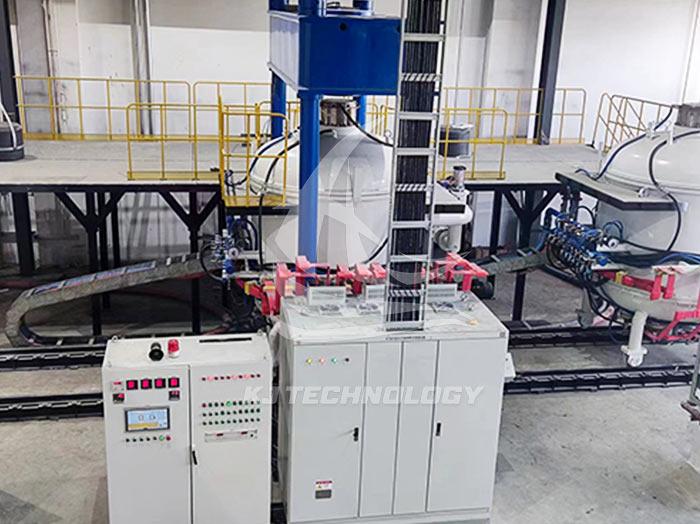What powders can be burned in a vacuum powder sintering furnace?
 09-09-2025 Author: KJ technology
09-09-2025 Author: KJ technology
The vacuum powder sintering furnace, due to its unique vacuum environment and precise temperature control, can process various types of powder materials, especially suitable for materials that are sensitive to oxidation, require high density or special microstructures. The following are the main types of powders that can be sintered and their specific application scenarios:
1. Metal powder
iron base alloys
Stainless steel powder: High density and corrosion-resistant components (such as valves and pump bodies) can be prepared by vacuum sintering, avoiding the formation of oxide scale in traditional sintering and achieving better surface smoothness.
Tool steel powder: such as high-speed steel (HSS) and cold work mold steel, with better hardness and improved wear resistance after vacuum sintering, suitable for tool and mold manufacturing.
superalloy
Nickel based/cobalt based alloys: used for aviation engine turbine discs, gas turbine blades, etc. Vacuum sintering can eliminate grain boundary oxidation and maintain higher tensile strength at 1200 ℃.
Titanium alloy powder: Vacuum sintering avoids hydrogen embrittlement, resulting in excellent biocompatibility and increased fatigue life of orthopedic implants.
magnetic materials
NdFeB: Vacuum sintering can control grain orientation, with a residual magnetic Br of 1.4T or more, used for high-performance motor and wind turbine magnets.
Ferrite powder: with stable magnetic permeability after sintering, suitable for core components of inductors and transformers.
Precious metals and refractory metals
Tungsten and molybdenum powders: High density target materials are prepared by vacuum sintering for semiconductor sputtering coating, with higher purity.
Platinum group metals: such as platinum and iridium alloys, vacuum sintered to avoid high-temperature volatilization losses, used for fuel cell electrodes and catalyst carriers.
2. Ceramic powder
Oxide ceramics
Aluminum oxide (Al ₂ O3): vacuum sintering is used to prepare electronic substrates, with high thermal conductivity and stable dielectric constant, suitable for 5G communication modules.
Zirconia (ZrO ₂): After partial stabilization treatment, it has high bending strength after sintering and is used for dental implants and tool coatings.
Nitride ceramics
Silicon nitride (Si ∝ N ₄): vacuum sintering combined with hot isostatic pressing (HIP) is used to prepare bearing balls, which have higher wear resistance and longer service life.
Aluminum nitride (AlN): After sintering, it has high thermal conductivity and is used for high-power LED heat dissipation substrates. Its thermal expansion coefficient matches that of silicon.
Carbide ceramic
Silicon carbide (SiC): a nuclear fuel cladding material prepared by vacuum sintering, with excellent neutron radiation resistance and higher strength retention at 1600 ℃.
Tungsten carbide (WC): sintered hard alloy mixed with cobalt powder, with higher hardness, used for drill bits and cutting tools.
3. Composite material powder
Metal ceramic composite materials
TiC/Ni based composite materials: Cutting tools prepared by vacuum sintering have higher hardness and wear resistance.
Al ₂ O ∝/Cu composite material: After sintering, it has both high strength and high thermal conductivity, and is used for electronic packaging heat sinks.
carbon-carbon composite material
Asphalt based carbon fiber: vacuum sintering preparation for spacecraft thermal protection system, does not melt at 2000 ℃, and has low density.
Graphite/silicon carbide composite material: excellent thermal shock resistance after sintering, suitable for lining rocket engine nozzles.
Gradient Functional Materials (FGM)
Multi layer powder stacking sintering: such as ceramic metal gradient coating, vacuum sintering achieves continuous composition transition, reduces thermal stress, and is used for turbine blade protection.
4. Special functional powder
3D printing powder
Laser Selective Melting (SLM) powder: Vacuum sintering can remove surface oxides of the powder, improve powder flowability, and print parts with higher density.
Adhesive jet (BJ) powder: The shrinkage rate after sintering is controllable, suitable for the manufacturing of complex structured ceramic parts.
nanopowders
Nano alumina: Vacuum sintered to prepare transparent ceramics with higher transmittance, used for high-pressure sodium lamp tubes.
Nano silver powder: Excellent conductivity after sintering, used for flexible electronic circuit interconnection.
Bioactive powder
Hydroxyapatite (HA): Vacuum sintering is used to prepare orthopedic implants, which enhances the bonding strength with bone tissue and promotes bone healing.
Bioglass powder: After sintering, it releases Ca ² ⁺ and SiO ₄⁴⁻ ions, stimulates cell proliferation, and is used as a dental restoration material.
5. Key factors in material selection
Sintering temperature: The maximum temperature of the vacuum furnace is usually 1600-2400 ℃, which needs to be selected according to the melting point of the material (such as tungsten requiring ≥ 2200 ℃).
Atmosphere compatibility: Some materials need to be filled with protective gas after vacuum treatment (such as H ₂ reduced copper oxide, Ar to prevent titanium alloy from absorbing hydrogen).
Powder particle size: Fine powder requires the addition of a binder to prevent agglomeration, while coarse powder has a low sintering shrinkage rate.
Additive design: Reduce sintering temperature by adding activators (such as Ni, Co), or introduce pore forming agents to control porosity.
6. Typical application cases
In the aviation field, the use of vacuum sintering furnace to prepare LEAP engine turbine discs reduces costs and extends lifespan.
Electronics industry: Adopting vacuum sintered aluminum nitride substrate to improve the heat dissipation efficiency of fast charging modules.
Medical field: Vacuum sintered hydroxyapatite coated hip joint reduces postoperative looseness rate.








